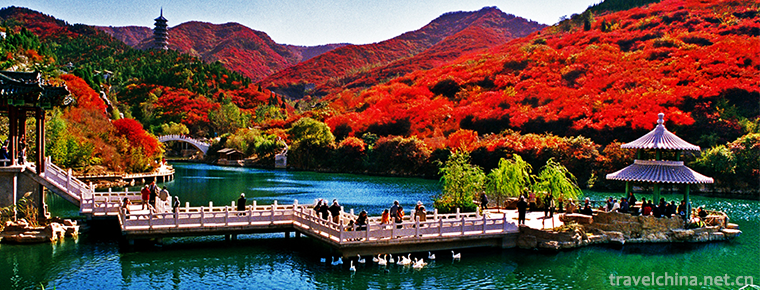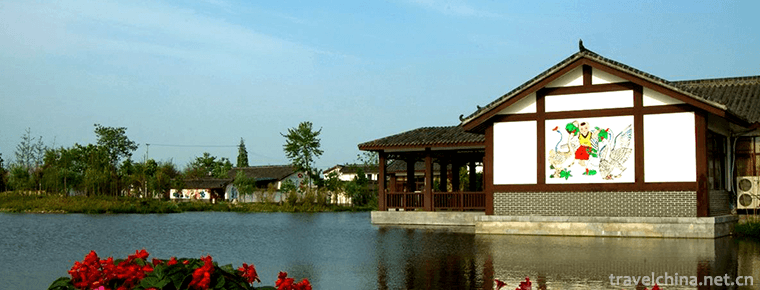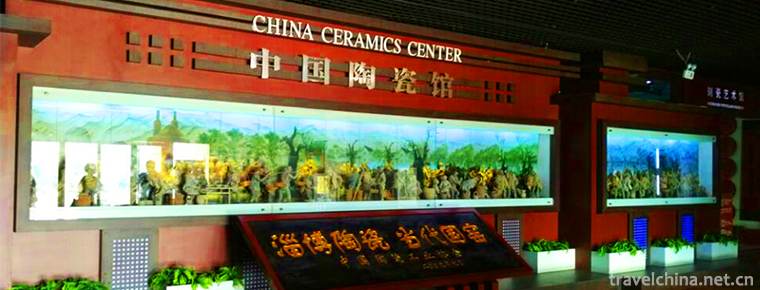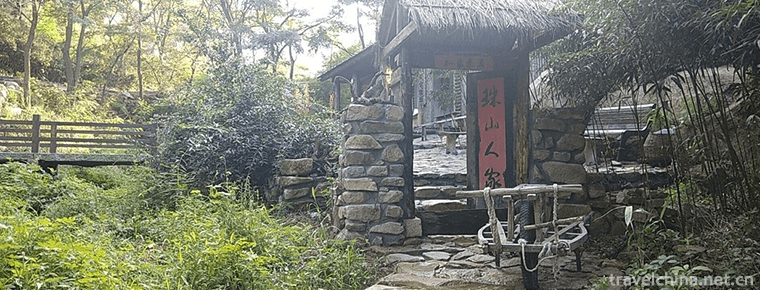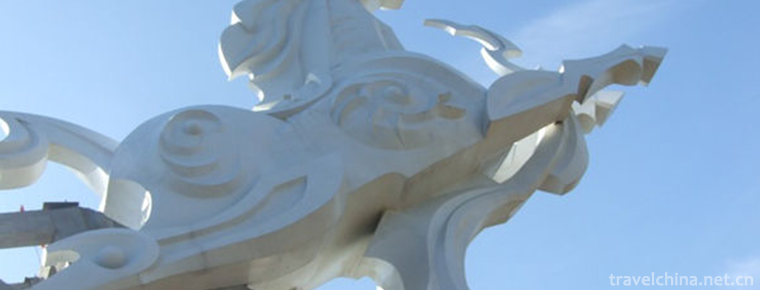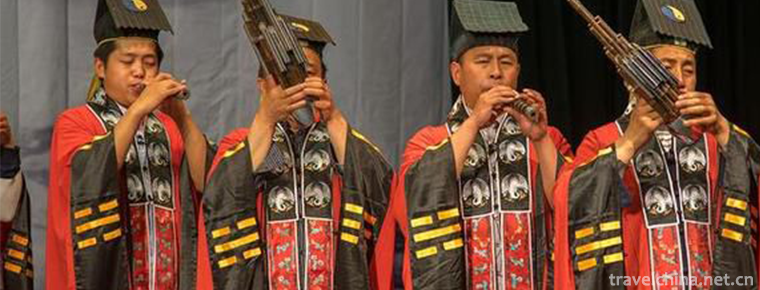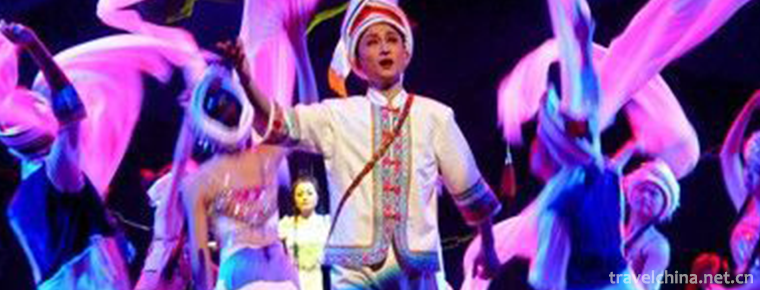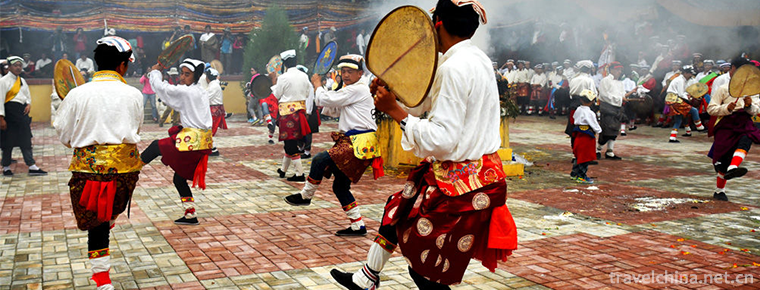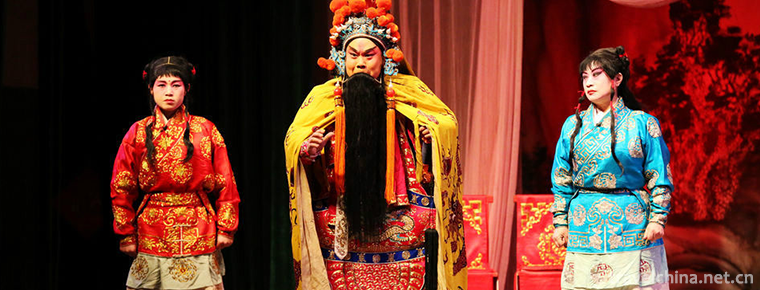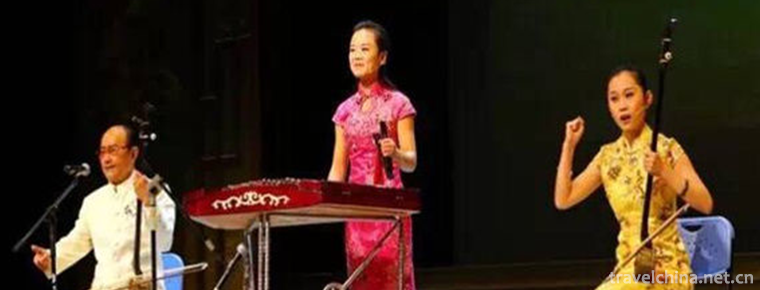Mingsha Mountain Crescent Spring Scenic Area
Mingsha Mountain Crescent Spring Scenic Spot is located 5 kilometers south of Dunhuang City, Gansu Province. It covers an area of 312,000 square kilometers, including Mingsha Mountain. It is 40 kilometers long in the west of Shandong Province, 20 kilometers wide in the north and south, and the main peak is 1715 meters above sea level. Crescent Spring is surrounded by Mingsha Mountain.
Mingsha Mountain Crescent Spring Scenic Spot, the main attractions are Crescent Spring, Mingsha Mountain. Crescent Moon Spring is surrounded by Mingsha Mountain. It is named after its shape resembles a crescent moon. Mingsha Mountain is located 5 kilometers away from the southern suburbs of Dunhuang City. It is named for its sandstorm. Mingsha Mountain is composed of quicksand with five colors of dividend, yellow, green, white and black.
Mingsha Mountain Crescent Spring Scenic Area was designated as a national key scenic spot in 1994, and won the honorary title of "one of the five most beautiful deserts in China". On July 20, 2015, it was approved as a national AAAAA tourist attraction.
In January 2016, the National Tourism Administration and the Ministry of Environmental Protection intend to identify Mingsha Mountain Crescent Spring scenic spot in Jiuquan City, Gansu Province as a national ecotourism demonstration area. In the 2008 Northwest China Tourism Marketing Conference and Tourism Equipment Exhibition, it was included in the "Magic Northwest 100 Sceneries" list.
Historical evolution
In the limited historical records and poems and lyrics, Yueya Spring has always been an interesting contrast with Mingsha Mountain, with its ripples of blue waves, shallow bottom of fishing and abundant water and grass. Among the local people, there are three treasures: Ironbacked Fish, Seven Stars Grass and Five Colors Sand.
Until 1960, there was no significant change in spring water, with a maximum depth of 9 meters and a lake area of 22.5 mu.
In the mid-1970s, the local reclamation, land reclamation, pumping irrigation and the destruction of surrounding vegetation in recent years led to a sharp decline in the groundwater level in Dunhuang, resulting in a sharp decline in the water level of Crescent Spring.
The minimum storage time of Crescent Spring was in 1985, when the average water depth of Crescent Spring was only 0.7 to 0.8 meters. Because of the lack of water, at that time, when the spring dried up, people could walk away, and the crescent spring formed two small springs that were no longer crescent-shaped. This makes "whether the Crescent Spring will disappear tomorrow" become the focus of many people's attention. Since then, Dunhuang City has adopted a variety of ways to replenish the Crescent Spring.
Mingsha Mountain Crescent Spring Scenic Spot, the master plan was compiled from 1992 to 1994. However, due to many reasons, such as the scope and time of the plan, the plan has not been approved.
Since 2000, Dunhuang has taken emergency measures to replenish the water level of Crescent Spring by recharging river water around the Crescent Spring, so that the Crescent Spring will not be exhausted temporarily. In 2004, the water level dropped to 1.3 meters and the spring area decreased to 7.8 mu.
In August 2007, the Landscape Architecture Institute of China Urban Construction Research Institute redesigned the scenic area planning entrusted by Mingsha Mountain and Yueyaquan Administration Office of Dunhuang City.
On May 12, 2010, the address of the commercial street project was selected on the east side of the Mountain Gate of Mingsha Mountain Crescent Spring Scenic Spot. The commercial building with the design of architecture, space and environment as the carrier, has one main floor and two partial floors. After more than three months of construction, on the basis of the original tourist service center, a gathering and distributing hall integrating tourism consultation, tour guide service, visitors'rest and temporary reception, as well as providing tourists' guided maps, tour brochures and postcards has been built.
On August 21, 2014, the Ministry of Housing and Urban-Rural Construction issued a "Letter from the Ministry of Housing and Urban-Rural Construction on the Detailed Planning of Mingsha Mountain-Yueyaquan Scenic Spot Key Areas", formally approving the detailed planning of the key areas of Mingsha Mountain and Yueyaquan Scenic Spot in Dunhuang City.
In late July 2015, Mingsha Mountain Crescent Spring scenic spot was promoted to 5A National Tourism Scenic spot.
April 13, 2018, was included in "Magic Northwest 100 Scenes".
geographical position
Mingsha Mountain Crescent Crescent Spring Scenic Spot is located 5 km south of Dunhuang City (coordinates: latitude 40 05 longitude 94 40). Mingsha Mountain is more than 40 kilometers long in the west of Shandong Province, about 20 kilometers wide in the north and south, and its main peak is 1715 meters above sea level. Crescent Spring is surrounded by Mingsha Mountain. The crescent moon spring is nearly 100 meters long in the north and south, about 25 meters wide in the East and west, shallow in the East and shallow in the west, and about 5 meters deep in the deepest part.
Climatic characteristics
Mingsha Mountain Crescent Spring Scenic Spot belongs to temperate continental climate. Cold winter and hot summer, large annual temperature difference, concentrated precipitation, four distinct seasons, annual rainfall less, continental strong. The average temperature in Dunhuang in January is - 7.9 C, the lowest temperature is - 22.2 C, the average temperature in July is 25.7 C, and the highest temperature is 38.9 C. The extreme maximum temperature is 60 C, the minimum temperature is 0.1 C, The average annual precipitation is about 39.9 mm. The annual precipitation varies greatly, and the distribution is uneven within the year, mainly in summer.
Resource situation
Water resources conditions
Mingsha Mountain Crescent Spring Scenic Spot is short of water resources. The average water level of the Crescent Spring is about 1.5 meters. Since July 2013, the water level of the Crescent Spring has risen by nearly 10 centimeters compared with April 2013, and the area of the Crescent Spring has obviously expanded.
Forest resources
Mingsha Mountain Crescent Moon Spring Scenic Spot has precious plant resources such as naked fruit trees, Populus euphratica forest, Haloxylon ammodendron forest and so on. Due to sufficient water, the vegetation around Crescent Moon Spring is flourishing.
In 2013, Dunhuang Municipal Government and Mingsha Mountain Crescent Crescent Spring Management Office dredged the Northeast Wind Channel, and established the Northeast Wind Channel on the north side of the scenic spot. In the north side of the scenic spot, a 500-meter wide buffer zone was established to control the height of buildings and trees in the zone and improve the vegetation coverage. The urban green space rate of Dunhuang reached 32.7%, the green coverage rate reached 36.8%, and the per capita green space area of parks increased to 11.86 square meters.
Main attractions
Mingsha Mountain Crescent Spring Scenic Spot includes Crescent Spring and Mingsha Mountain. The scenic area covers an area of 312,000 square kilometers.
Crescent Spring
Being surrounded by Mingsha Mountain, it resembles a crescent moon and gets its name. In ancient times, it was called Shajing, also known as Yaoquan. It was once falsely spread to the Owa Pool and the Crescent Moon Spring in Qing Dynasty. For thousands of years, sandy mountains surround springs. Springs reflect sandy mountains. In the deep valleys of sandy mountains, "the wind whistles with sands, and the springs reflect the moon without dust". Crescent Spring has four wonders: the shape of the crescent moon is as old as ever, the evil land flows into a spring, the sand is not submerged in the mountains, and the old fish in ancient pools are not old.
Mingsha Mountain
Mingsha Mountain is named for the sound of sand movement. It was called "Shajiao Mountain" and "Shensha Mountain" in ancient times. Mountains are formed by the accumulation of quicksand, which is about 40 kilometers long in East and west, 20 kilometers wide in North and south, and the highest elevation is 1715 meters. Its hills and ridges are interlinked, and its peaks are spectacular like blades. The sand is pink, yellow, green, white and black. It is sparkling and sparkling. In case of frictional vibration, it will be Yinyin voice, the sound of drum horns, light as silk bamboo, heavy as thunder. Therefore, "Shaling Qingming" is one of the "Eight Sceneries" of Dunhuang.
Thousand birds chase
"Hundred birds chase" has become a beautiful scene in the scenic area in winter. On December 11, 2014, thousands of sparrows flew, foraged and rested over Mingsha Mountain Crescent Spring scenic spot in Dunhuang City, Gansu Province, showing the scene of "thousands of birds chasing".
Tourist guide
Transport line
1. Dunhuang Airport has opened twelve routes to and from Beijing, Shanghai, Tianjin, Nanjing, Xi'an, Chengdu, Hangzhou, Lanzhou, Urumqi, Jiayuguan, Dalian and Turpan.
Inbound flights: Beijing, Shanghai, Tianjin, Nanjing, Xi'an, Lanzhou, Chengdu, Hangzhou, Urumqi, Jiayuguan, Dalian, Turpan to Dunhuang;
Outbound flights: Dunhuang to Beijing, Shanghai, Tianjin, Nanjing, Xi'an, Lanzhou, Chengdu, Hangzhou, Urumqi, Jiayuguan, Dalian, Turpan.
2. At present, the Dunhuang Railway Station has opened eight railway lines, namely, Lanzhou (k9667)Dunhuang (k9668), Xi'an (k591)Dunhuang (k592), Jiuquan (7527)Dunhuang (7528), Lanzhou (y667)Dunhuang (y668).
3. Bus: Dunhuang Railway Station, Airport to Dunhuang City Bus One-way fare is 3 yuan per person. From urban area to Mingsha Mountain Crescent Spring scenic spot, you can take No. 3 bus from circling road to Mingsha Mountain Crescent Spring scenic spot at the terminal, and the fare is 1 yuan per person. (About ten minutes from downtown Dunhuang)
4. Taxi: The fare from taxi to scenic spot in Dunhuang city is 10-15 yuan per person.
5. Chartered car: Mingsha Mountain scenic spot belongs to the eastern line. The cost of Mogao Grottoes + Mingsha Mountain on the four-seat eastern line is about 150-200 yuan.
Tourist route
There are two tourist routes in Mingsha Mountain Crescent Spring Scenic Spot: one for sightseeing and the other for leisure and entertainment.
Sightseeing tour route: Mingyue Square archway - Tiebei Fish Park - Mingsha Mountain - Mingyue Pavilion - Crescent Spring, enjoy the desert natural scenery, climb the magical Mingsha Mountain.
Leisure and entertainment routes: Mingyue Square archway - Riding Camel - Mingsha Shandong Peak - Tiebei Fish Park - Crescent Spring.
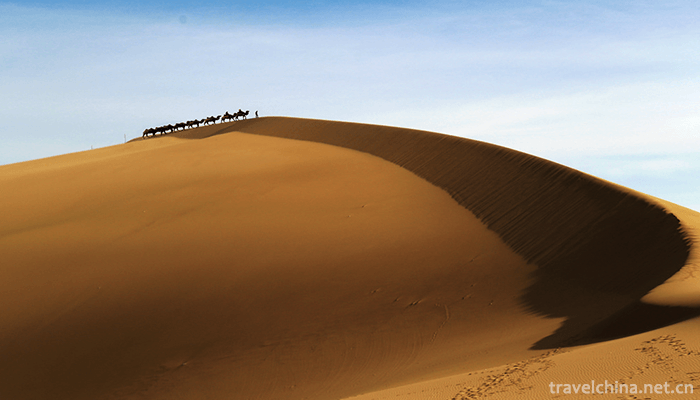
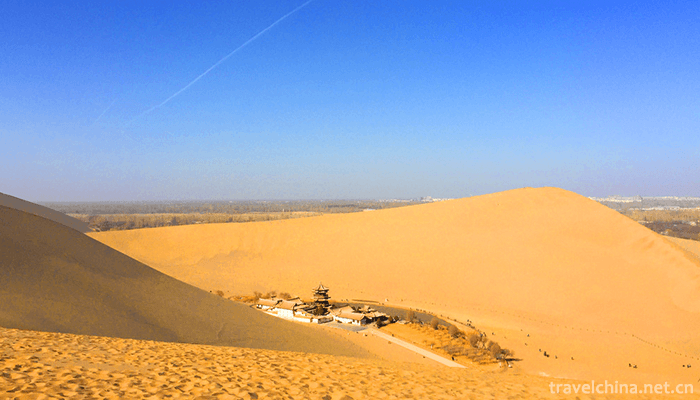
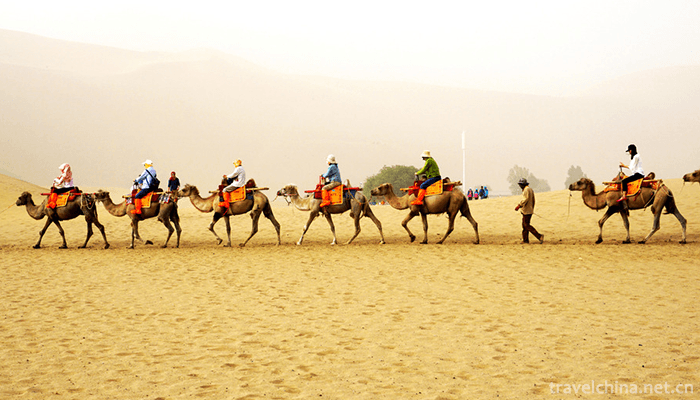
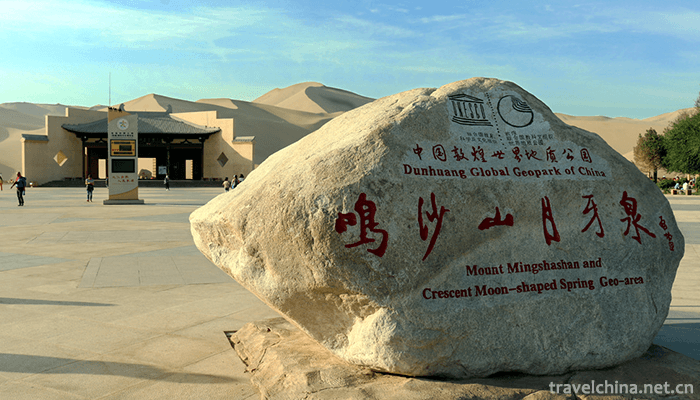
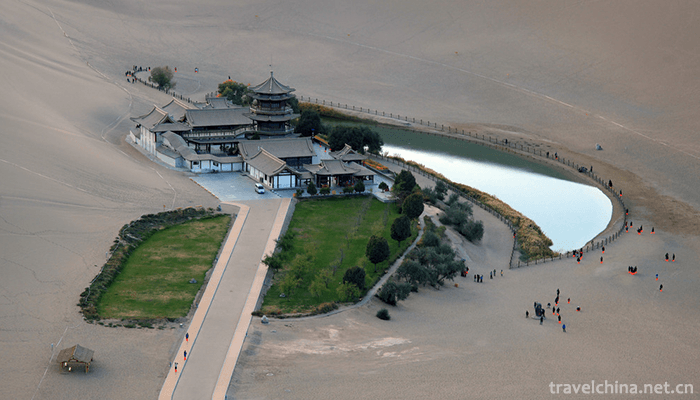
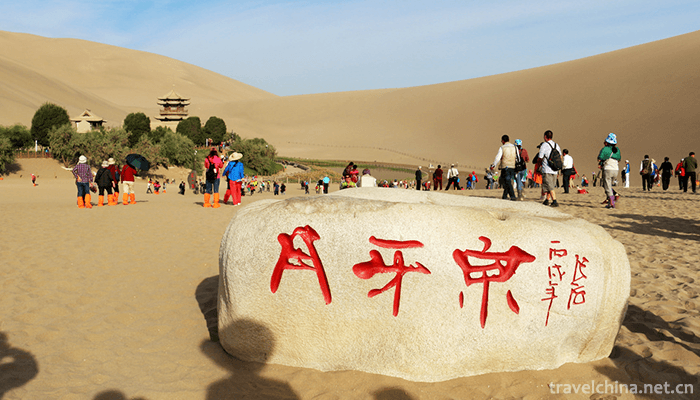
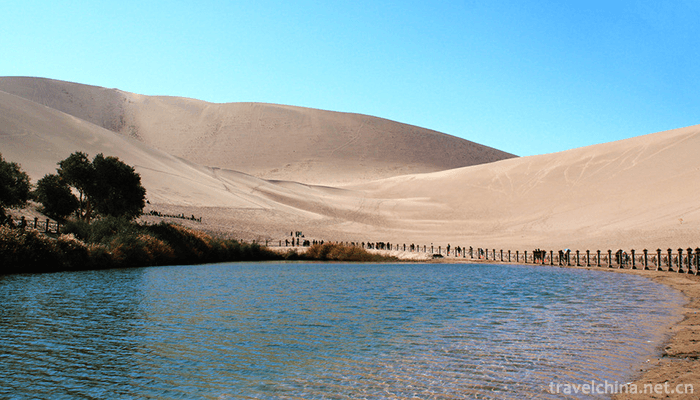
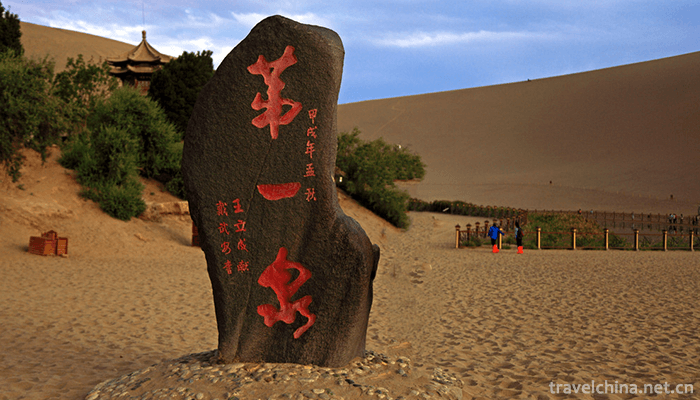
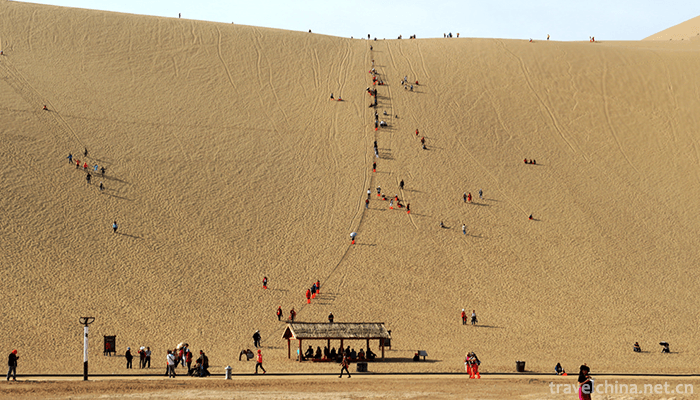
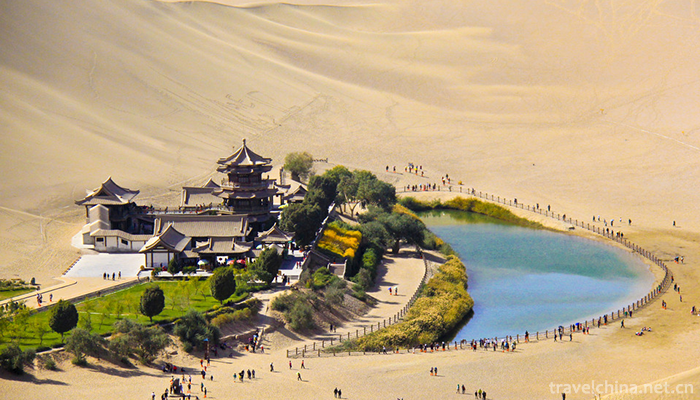
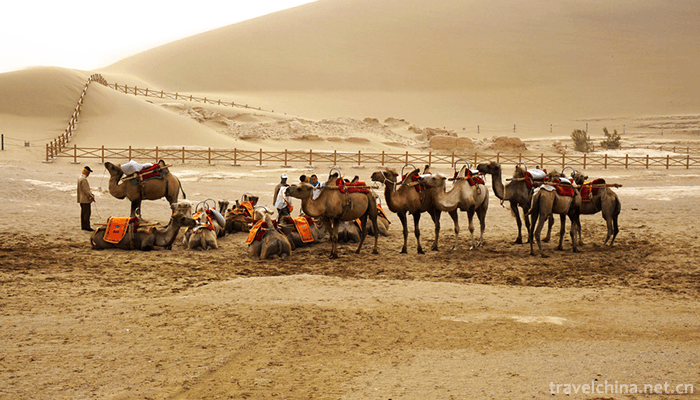
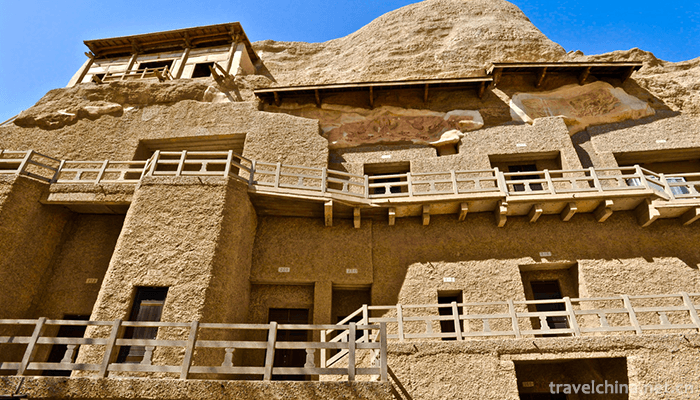
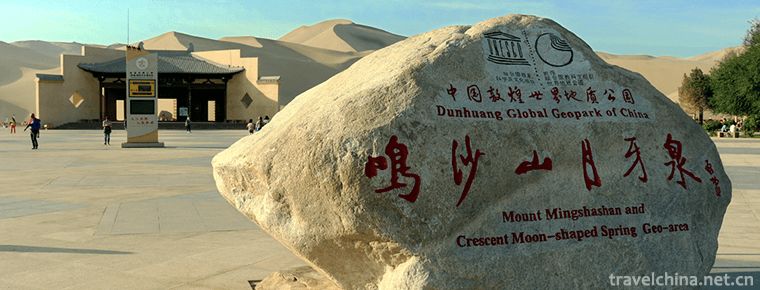
Mingsha Mountain Crescent Spring Scenic Area
-
Jiulushan Waterfalls Scenic Spot
JiuRushan Waterfall Group Scenic Area - National AAAA Class Scenic Area and National Forest Park, located in Xiying Town, Jinan City, Shandong Province, is the source of Jinxiuchuan Reservoir
Views: 227 Time 2018-12-22 -
Mianzhu New Year Picture Village Scenic Area in China
New Year Picture Village is located in Xiaode Town, South Gate of Mianzhu City, Sichuan Province. It is located between De'a Highway and Chengqing Highway, 73 kilometers away from Chengdu and within o
Views: 211 Time 2018-12-22 -
China Ceramic Museum
The China Ceramic Museum is located in the Cultural Square in the center of Zibo City. On the basis of Zibo Exhibition Hall in April 2001, it was transformed by large-scale investment
Views: 150 Time 2018-12-22 -
Chaoyang Park Beijing Sun Park
Chaoyang Park in Beijing is a comprehensive and multi-functional cultural recreation and entertainment park with gardening as the main part. It is the largest city park within the Fourth Ring Road in
Views: 138 Time 2019-01-05 -
Zhushan National Forest Park
Zhushan National Forest Park is located in Liuhua Po Street Office in the west of Qingdao Development Zone. It is a national forest park approved by the State Forestry Administration in December 2000
Views: 213 Time 2019-03-21 -
Legend of White Horse Dragging
The legend of white horse dragging rein is spread in Baima Temple in Jincheng, Shanxi Province. Baima Temple Mountain was originally named Sima Mountain
Views: 206 Time 2019-04-03 -
Sheng Guanyue in Jizhong
Jizhong Sheng wind music is popular in Jizhong Plain, that is, south of Beijing, west of Tianjin, north of Cangzhou and Dingzhou frontline nearly 30 counties and cities of traditional drum music varie
Views: 316 Time 2019-05-05 -
Southern Drama
Nan Opera, also known as Nan Opera and Shi Nan Diao, commonly known as "Gaotai Opera" or "People's Congress Opera", is a local opera in Enshi Tujia and Miao Autonomous Prefecture o
Views: 289 Time 2019-06-07 -
June meeting in Regong
Regong June Festival is a unique traditional cultural festival of Tibetan and Tu villages in Tongren County, Qinghai Province. It has been circulated for more than 1400 years. Every June in the Lunar
Views: 119 Time 2019-06-11 -
Shijiazhuang Silk String
Shijiazhuang silk string is also known as string tune, string tune, Hexi tune, small drum tune, Luoluo tune, daughter tune and so on. It is a local traditional drama in Hebei Province and one of the n
Views: 191 Time 2019-06-15 -
Xuzhou Qinshu
Xuzhou Qinshu is a kind of opera recognized by Xuzhou local people in Jiangsu Province. Spread in Xuzhou. At first, it was a recreational activity of "playful friends" in the leisure time of
Views: 336 Time 2019-07-09 -
Anhui University
( Anhui University For short, "anda" is located in the provincial capital. Market It's the state. "Double First-Class" initiative "World class discipline construction," M
Views: 208 Time 2019-10-04
